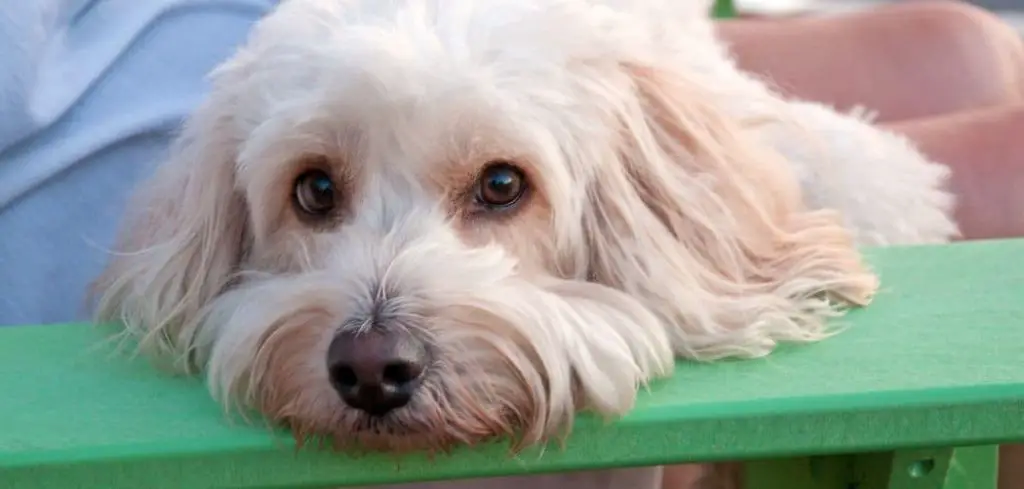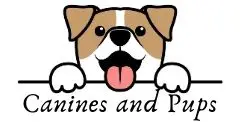If you’ve noticed your dog eating grass and panting more than usual, you might be wondering why this behavior is happening and whether it’s something to be concerned about.
Many dog owners have seen their furry friends munch on grass from time to time, often paired with heavy panting or labored breathing.
Understanding why your dog is eating grass and panting can help you ensure your pet’s health and comfort.
We dive deep into why dogs eat grass and pant, the possible causes behind these behaviors, and what you should do if your dog shows these symptoms frequently or with other warning signs.
Table of Contents
Why Does Dog Eating Grass and Panting Happen?
Dogs often eat grass and pant together as a response to digestive discomfort or stress. Eating grass can help soothe an upset stomach or even induce vomiting to relieve nausea, while panting may occur because the dog is feeling uncomfortable, anxious, or overheated.
Panting is a natural way for dogs to regulate their body temperature or express stress, so when combined with grass eating, it often signals that the dog is trying to cope with some internal distress.

Dog Eating Grass and Panting: Common Causes
1. Digestive Upset or Nausea
One of the most widely accepted explanations for dogs eating grass is that they are trying to soothe an upset stomach.
Grass can act as a natural emetic, meaning it sometimes induces vomiting.
If your dog feels nauseous or has indigestion, they might eat grass to make themselves vomit and relieve discomfort.
Panting often accompanies nausea or abdominal discomfort in dogs.
When your dog is nauseous, they might pant heavily due to stress and pain signals, or because they’re working harder to breathe comfortably.
If your dog is eating grass and panting because of digestive upset, you might also notice other symptoms such as drooling, lip licking, gagging, or vomiting after eating grass.
Occasional grass eating in this context is usually normal, but if it becomes frequent or your dog looks unwell, it could indicate a more serious gastrointestinal issue.
Related: Dog eating grass and drinking lots of water (Explained)
2. Stress and Anxiety
Dogs pant when they are anxious or stressed. Similarly, grass eating can also be a coping mechanism for stress in some dogs.
If your dog’s panting coincides with periods of nervousness, loud noises, separation, or changes in their environment, the grass eating might be a way to self-soothe.
Stress causes the body to release stress hormones that increase heart rate and breathing, leading to panting.
Meanwhile, chewing grass might provide a distraction or help reduce anxiety, much like how some people bite their nails or chew gum.
If stress is the culprit, look for additional signs such as pacing, whining, shaking, hiding, or excessive licking.
Reducing stressors and providing a calm environment can help curb both panting and grass eating due to anxiety.
3. Dietary Deficiency or Boredom
Sometimes dogs eat grass simply because they have a nutritional deficiency, such as a lack of fiber or certain micronutrients in their diet.
Eating grass can supplement fiber and aid digestion.
Panting in this case might be unrelated but could also be linked to overall discomfort if your dog isn’t feeling well due to poor nutrition or a monotonous diet.
Boredom can also lead dogs to eat grass out of sheer lack of stimulation.
If your dog is panting excessively because they are under-exercised or anxious, they may turn to grass eating as a way to pass time or relieve stress.
Consider the quality of your dog’s food and their daily exercise routine.
A balanced diet rich in fiber and vitamins, along with adequate physical and mental stimulation, can help reduce grass eating and excessive panting.
4. Heat and Overexertion
Panting is a normal way dogs cool themselves, especially after exercise or in hot weather.
However, panting paired with eating grass may sometimes occur if a dog is overheated and seeking moisture or trying to soothe a dry mouth or throat.
Dogs do not sweat like humans; their primary cooling mechanism is panting.
If your dog is panting excessively, particularly in warm conditions, they might eat grass as a way to hydrate or find some relief.
Make sure your dog has access to plenty of fresh water and shade during hot weather or after vigorous play.
Excessive panting can lead to dehydration, which can make your dog seek out alternative moisture sources, such as grass.
Related: Dog eating grass and not eating (Explained)
5. Medical Conditions
Certain medical problems can cause a dog to eat grass and pant excessively.
Conditions such as gastrointestinal disorders, respiratory issues, or even pain can cause these symptoms.
Gastrointestinal problems like infections, parasites, or inflammatory bowel disease can cause nausea, discomfort, and panting.
Respiratory issues such as heatstroke, allergies, or infections can make panting worse and also cause restlessness that leads to unusual behavior like grass eating.
Pain or discomfort from injuries or internal illnesses can cause stress panting and odd behaviors.
If your dog’s grass eating and panting are accompanied by vomiting, diarrhea, lethargy, or changes in appetite, a veterinary exam is needed.
Your vet can rule out or treat underlying medical causes.
6. Natural Instinct and Habit
Some experts suggest that grass eating is simply a natural instinct leftover from wild ancestors who ate plants to supplement their diets.
Panting may simply be coincidental or linked to other factors such as exercise or excitement.
If your dog is otherwise healthy and happy, occasional grass eating paired with normal panting might just be part of their normal behavior.
When Should You Be Concerned About Dog Eating Grass and Panting?
Although many cases of grass eating and panting are harmless, some signs should prompt you to seek veterinary care:
Persistent or excessive panting that does not calm down.
Repeated vomiting or signs of nausea.
Lethargy or weakness.
Difficulty breathing or coughing.
Loss of appetite or refusal to drink water.
Signs of pain or distress.
Changes in behavior such as hiding, aggression, or unusual vocalizations.
Any other signs of illness like diarrhea, fever, or swelling.
What to Do If Your Dog Is Eating Grass and Panting
Observe your dog’s behavior: Keep track of how often your dog eats grass and pants heavily.
Note if there are other symptoms like vomiting, diarrhea, or changes in appetite.
Check the environment: Remove any harmful plants or chemicals from your dog’s access.
Make sure your dog isn’t exposed to extreme heat and has plenty of water.
Evaluate diet and exercise: Ensure your dog is eating a balanced diet and getting enough physical and mental activity.
A healthy routine can reduce boredom and nutritional causes.
Reduce stress: Identify and minimize stressful triggers.
Use calming techniques like regular walks, playtime, or pheromone diffusers.
Consult your veterinarian: If you notice any concerning signs, frequent grass eating, or persistent panting, schedule a vet visit.
The vet will perform a physical exam, possibly run tests, and recommend treatment if needed.
Key Takeaway: Dog Eating Grass and Panting
Dog eating grass and panting is a relatively common behavior with many possible explanations.
From natural instincts and boredom to digestive upset and stress, these behaviors often have a root cause that can be addressed with care and attention.
While occasional grass eating and panting is usually nothing to worry about, frequent or severe symptoms warrant veterinary attention to rule out medical problems.
By observing your dog closely, maintaining a healthy diet and routine, and seeking professional advice when needed, you can help ensure your dog stays happy, healthy, and comfortable.
